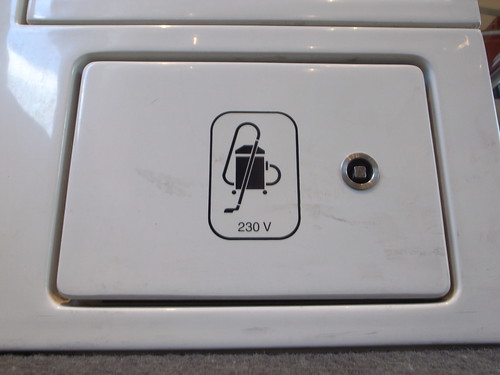Was in Grenoble yesterday, attending an event called "Design Matters organized by the big nanotechnology operation they have there as well as several other partners. The gig was about design in the context of industrial innovation: "Is it possible to see designs as fundamental processes developed by a multi-partner, multi-disciplinary innovation hub which will allow us to combine the essential elements of research, analysis, conception, creation and production to develop highly valuable technological products?". Speakers ranged from philosopher (Bernard Stiegler), UX specialist (Adam Greenfield), design (the director of a french design school, Federico Casalegno and a designer from Alcatel) and design/branding (SEB). Some of the elements I found interesting are summarized below.

Bernard Stiegler gave an inspiring talk about the evolution of techniques (externalization as described by Lerhoi-Gourhan) that lead to technosciences. He showed how the role of design evolved over time and how we reached a situation in which people/structures who build/design technologies are separated from users, now called "consumers". He pointed how today there's a "desire crisis", a sort of exhaustion of desire in which the individual is disaffected. His claim is the techniques used to create "consumer behavior" amount to the destruction of psychic and collective individuation. According to him, technoscience developments became opaque and distabilize biological, physiological and geographical systems. For the individual, it's a loss of intelligibility in the system as well as a loss of participation. He then advocated for more open and distributed design process in which people can participate. To some extent, Stiegler justifies bottom-up innovation by a psychological impetus necessary for our society to go beyond today's desire exhaustion.
Federico Casalegno presented the eLense project and the Landmark interactive bus stop (in which my colleagues Enrico Costanza and Mirja Leinss participated). Federico showed their design approach at the MIT Mobile Experience Lab, exemplifying today's design methods there.
Attending Adam's "Everyware" talk for the 4 of 5th time is always interesting. Especially to see how things eveolved over time. For example, I was struck by his new slides about "what does it suggest that the same presentation was illustrated last year with prototypes is now exemplified with existing products". His addition of Deleuze work (see Postscript on the Societies of Control) is also strikingly relevant. It was important also to see what Stiegler had to say about Adam's work, as he pointed our the importance of going beyond resistance (which reminds of "nostalgia is for suckers" that Adam threw at LIFT Korea) to participate and invent.
After this very high level discussion, a former designer at Alcatel described the role of a prudct designer according to him. Although what he presented was very conventional to me, it was interesting to see the designers' stance in these big french operations. He claimed how design was blurry, intangible and "difficult to measure" in this context, showing example of meetings in which the person with the vaccum cleaner in the corridor is asked if she preferred "product A" or "product B" or how the CEO needs to get back the products at home and ask his wife about it. I quote that example because I was kind of astonished by the gender assumptions there, as if I had been swamped background in time. I also found curious the sort of design he presented as he never mentioned "critical design" or less mechanistic and utilitarian approach.
Finally, the manager of branding at SEB described the relationship between branding and product design. What was very inspiring there was his description of the failures of some products who wanted to jump in a certain bandwagon (like... designing ironing devices in an "apple-like" way with translucid material), forgotting to match the brand of the product. He also describes some of their process based on "affordance test" of pans, coffee-machine and toasters: how they ask 100 persons (who are presented the product) to use it, how they would hold it, use X and Y functionalities. In a sense, what he described what very close to usability testing in which people begins to explore freely the usage of a physical artifact.
Why do I blog this? although a bit loosely coupled at first, the program was very interesting in the sense that it showed the sort of messiness of approaches and perspectives, especially in the context of France. Good meetings there as well.
 Photos of the sculpture installation on the Lower East Side by Brad Downey and Mike Wrobel (found on the Fecal Face website).
Photos of the sculpture installation on the Lower East Side by Brad Downey and Mike Wrobel (found on the Fecal Face website).




















